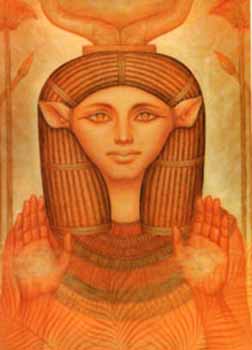Source: www.crystalinks.com
In Egyptian mythology, Hathor (Egyptian for House of Horus) was originally a personification of the Milky Way, which was seen as the milk that flowed from the udders of a heavenly cow.
��� Functions of myth
Our history our culture our symbols are all over the word'but many of us don't know there ours! all of this! these concepts, begin with this concept,this story which is part history part mythology',but mythology is important because it represents a higher aspect of life'. myths are necessaryfor human kind to develop.Anthony T. Browder
One of the foremost functions of myth is to establish models for behavior The figures described in myth are often the result of circumstances which may have a moral interpretation.
They are worthy role models of human beings because they embody certain combinations of human and animal traits. For example, the Centaur is part man, part beast.
The upper body, being human is a symbol of rationality. The lower body, being of a horse is a symbol of animal instinct. The Centaur thus represents the uniquely human psychological challenge of animal instinct in relation to the rational mind. This example shows that myths are not only valuable due to cultural assumption (or 'spirituality'), but because they portray a set of symbols which can be interpreted morally. It is not necessary to introduce divine experience to explain these symbols, since a symbol is by definition a depiction of an idea in physical form. (bird = power, horse = beast, tree = knowledge).
Hathor Outside the Nile
Hathor was worshipped in Canaan in the 11th century BC, which at that time was ruled by Egypt, at her holy city of Hazor, which the Old Testament claims was destroyed by Joshua (Joshua 11:13, 21).
The Sinai Tablets show that the Hebrew workers in the mines of Sinai about 1500 BC worshipped Hathor, whom they identified with the goddess Astarte.
Some theories state that the golden calf mentioned in the bible was meant to be a statue of the goddess Hathor (Exodus 32:4-32:6.), although it is more likely to be a representation of the 2 golden calves set up by Rehoboam, an enemy of the levite priesthood, which marked the borders of his kingdom.
The Greeks also loved Hathor and equated her with their own goddess of love and beauty, Aphrodite.
Some ancient texts refer to a serpent of light residing in the heavens. This is believed to have been inspired by the Milky Way (a similar allusion to the ouroboros).
In general, the Egyptian gods and Egyptian religion did not travel. The ancient Egyptians were insular, not overly interested in importing or exporting deities. Eventually Isis would become the great exception, with temples in Rome, and throughout Europe, Africa and Asia, as far away as the British Isles. Hathor was her trailblazing predecessor. Beyond the traditional borders of Egypt and Nubia, Hathor was worshipped throughout Semitic West Asia, beloved particularly in the city of Byblos.
http://www.crystalinks.com/hathor.html ���
Our history our culture our symbols are all over the word'but many of us don't know there ours! all of this! these concepts, begin with this concept,this story which is part history part mythology',but mythology is important because it represents a higher aspect of life'. myths are necessaryfor human kind to develop.Anthony T. Browder
One of the foremost functions of myth is to establish models for behavior The figures described in myth are often the result of circumstances which may have a moral interpretation.
They are worthy role models of human beings because they embody certain combinations of human and animal traits. For example, the Centaur is part man, part beast.
The upper body, being human is a symbol of rationality. The lower body, being of a horse is a symbol of animal instinct. The Centaur thus represents the uniquely human psychological challenge of animal instinct in relation to the rational mind. This example shows that myths are not only valuable due to cultural assumption (or 'spirituality'), but because they portray a set of symbols which can be interpreted morally. It is not necessary to introduce divine experience to explain these symbols, since a symbol is by definition a depiction of an idea in physical form. (bird = power, horse = beast, tree = knowledge).
Hathor Outside the Nile
Hathor was worshipped in Canaan in the 11th century BC, which at that time was ruled by Egypt, at her holy city of Hazor, which the Old Testament claims was destroyed by Joshua (Joshua 11:13, 21).
The Sinai Tablets show that the Hebrew workers in the mines of Sinai about 1500 BC worshipped Hathor, whom they identified with the goddess Astarte.
Some theories state that the golden calf mentioned in the bible was meant to be a statue of the goddess Hathor (Exodus 32:4-32:6.), although it is more likely to be a representation of the 2 golden calves set up by Rehoboam, an enemy of the levite priesthood, which marked the borders of his kingdom.
The Greeks also loved Hathor and equated her with their own goddess of love and beauty, Aphrodite.
Some ancient texts refer to a serpent of light residing in the heavens. This is believed to have been inspired by the Milky Way (a similar allusion to the ouroboros).
In general, the Egyptian gods and Egyptian religion did not travel. The ancient Egyptians were insular, not overly interested in importing or exporting deities. Eventually Isis would become the great exception, with temples in Rome, and throughout Europe, Africa and Asia, as far away as the British Isles. Hathor was her trailblazing predecessor. Beyond the traditional borders of Egypt and Nubia, Hathor was worshipped throughout Semitic West Asia, beloved particularly in the city of Byblos.
http://www.crystalinks.com






0 comments:
Post a Comment